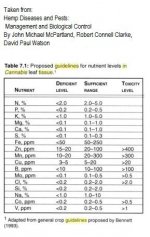My job is growing weed. To not understand dirt would be similar to malpractice. Show us your plants who dat
If you spent all of 10 seconds looking you would find plenty of pictures. This was once a thread that had something going on, some continuity, some pictures, and some good back and forth. Now it's been watered down to some obscure back and forth between 3 or so people trying to inflate their egos so it seems. Shit, the OP had his account banned again and this dead horse keeps getting beaten. I'm all for learning from one another but some of you guys have a condescending, holier than thou attitude. There are pages and pages of this. I guess I was just hoping that this thread could take a productive turn.



 look at Mars LED they marketed it with claims or any other LED company claiming it to be better then a 1000 watt Hid yet some bought into it and end result failure after failure in dry gram weight
look at Mars LED they marketed it with claims or any other LED company claiming it to be better then a 1000 watt Hid yet some bought into it and end result failure after failure in dry gram weight 
